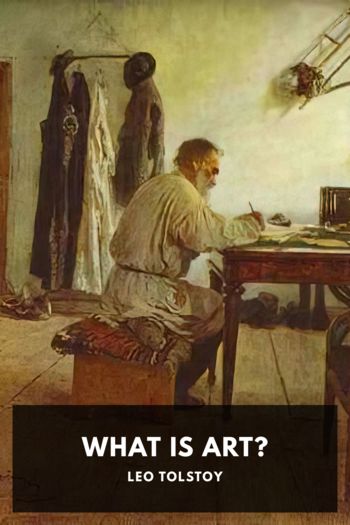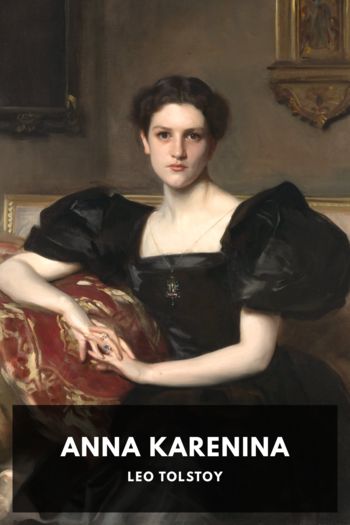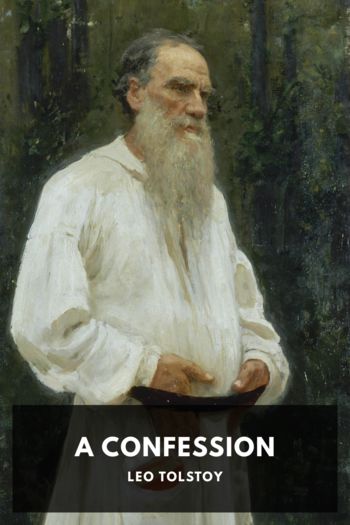What Is Art? by Leo Tolstoy (english readers .txt) 📕

- Author: Leo Tolstoy
Book online «What Is Art? by Leo Tolstoy (english readers .txt) 📕». Author Leo Tolstoy
It is true that art which satisfies the demands of the religious perception of our time is quite unlike former art, but, notwithstanding this dissimilarity, to a man who does not intentionally hide the truth from himself, it is very clear and definite what does form the religious art of our age. In former times, when the highest religious perception united only some people (who, even if they formed a large society, were yet but one society surrounded by others—Jews, or Athenian or Roman citizens), the feelings transmitted by the art of that time flowed from a desire for the might, greatness, glory, and prosperity of that society, and the heroes of art might be people who contributed to that prosperity by strength, by craft, by fraud, or by cruelty (Ulysses, Jacob, David, Samson, Hercules, and all the heroes). But the religious perception of our times does not select any one society of men; on the contrary, it demands the union of all—absolutely of all people without exception—and above every other virtue it sets brotherly love to all men. And, therefore, the feelings transmitted by the art of our time not only cannot coincide with the feelings transmitted by former art, but must run counter to them.
Christian, truly Christian, art has been so long in establishing itself, and has not yet established itself, just because the Christian religious perception was not one of those small steps by which humanity advances regularly; but was an enormous revolution, which, if it has not already altered, must inevitably alter the entire life-conception of mankind, and, consequently, the whole internal organisation of their life. It is true that the life of humanity, like that of an individual, moves regularly; but in that regular movement come, as it were, turning-points, which sharply divide the preceding from the subsequent life. Christianity was such a turning-point; such, at least, it must appear to us who live by the Christian perception of life. Christian perception gave another, a new direction to all human feelings, and therefore completely altered both the contents and the significance of art. The Greeks could make use of Persian art and the Romans could use Greek art, or, similarly, the Jews could use Egyptian art—the fundamental ideals were one and the same. Now the ideal was the greatness and prosperity of the Persians, now the greatness and prosperity of the Greeks, now that of the Romans. The same art was transferred into other conditions, and served new nations. But the Christian ideal changed and reversed everything, so that, as the Gospel puts it, “That which was exalted among men has become an abomination in the sight of God.” The ideal is no longer the greatness of Pharaoh or of a Roman emperor, not the beauty of a Greek nor the wealth of Phoenicia, but humility, purity, compassion, love. The hero is no longer Dives, but Lazarus the beggar; not Mary Magdalene in the day of her beauty, but in the day of her repentance; not those who acquire wealth, but those who have abandoned it; not those who dwell in palaces, but those who dwell in catacombs and huts; not those who rule over others, but those who acknowledge no authority but God’s. And the greatest work of art is no longer a cathedral of victory84 with statues of conquerors, but the representation of a human soul so transformed by love that a man who is tormented and murdered yet pities and loves his persecutors.
And the change is so great that men of the Christian world find it difficult to resist the inertia of the heathen art to which they have been accustomed all their lives. The subject-matter of Christian religious art is so new to them, so unlike the subject-matter of former art, that it seems to them as though Christian art were a denial of art, and they cling desperately to the old art. But this old art, having no longer, in our day, any source in religious perception, has lost its meaning, and we shall have to abandon it whether we wish to or not.
The essence of the Christian perception consists in the recognition by every man of his sonship to God, and of the consequent union of men with God and with one another, as is said in the Gospel (John 17:2185). Therefore the subject-matter of Christian art is such feeling as can unite men with God and with one another.
The expression unite men with God and with one another may seem obscure to people accustomed to the misuse of these words which is so customary, but the words have a perfectly clear meaning nevertheless. They indicate that the Christian union of man (in contradiction to the partial, exclusive union of only some men) is that which unites all without exception.
Art, all art, has this characteristic, that it unites people. Every art causes those to whom the artist’s feeling is transmitted to unite in soul with the artist, and also with all who receive the same impression. But non-Christian art, while uniting some people together, makes that very union a cause of separation between these united people and others; so that union of this kind is often a source, not only of division, but even of enmity towards others. Such is all patriotic art, with its anthems, poems, and monuments; such is all Church art, i.e. the art of certain cults, with their images, statues, processions, and other local ceremonies. Such art is belated and non-Christian art, uniting the people of one cult





Comments (0)